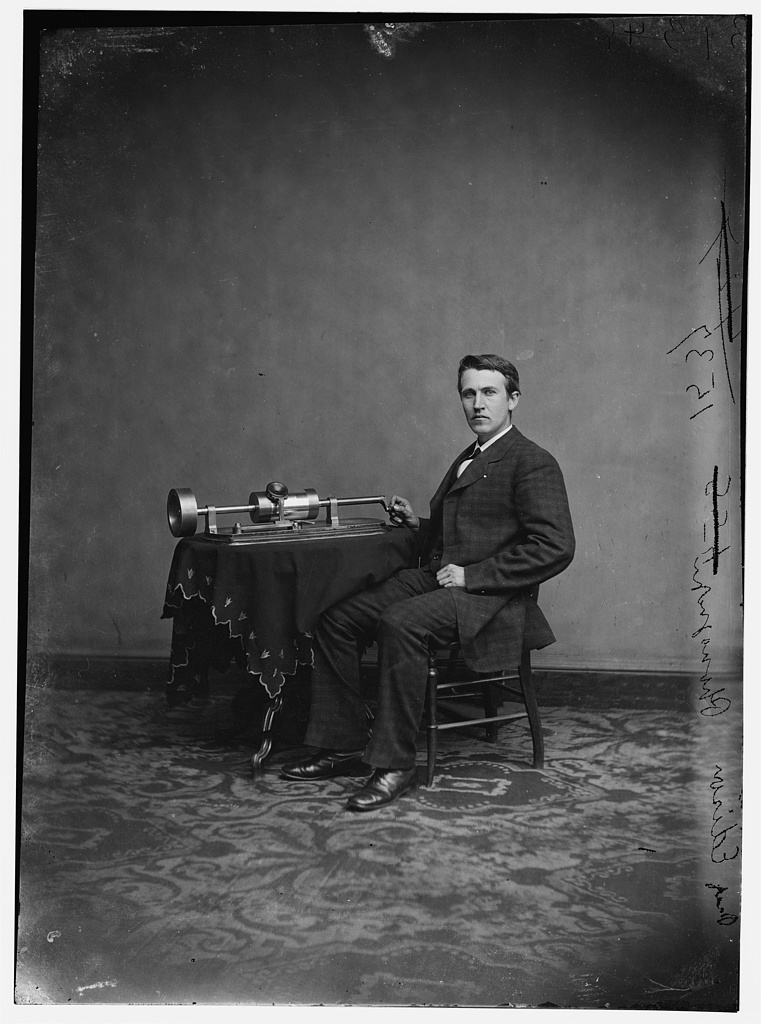Thomas Alva Edison is famous as one of the pioneering inventors of the incandescent light bulb. The ‘light-bulb moment’ is now shorthand for a bright idea, and another of Edison’s inventions, the phonograph, would jump start the record industry - not bad for a man who was himself almost completely deaf. Kip Heath explores Edison's legacy as part of Disability History Month.

The reason for Edison’s deafness is uncertain. Edison himself told stories of being lifted onto a train by his ears and being hit around the head by a train conductor; he also confided to friends that none of these were true. What is certain is that in 1905 and again in 1908, Edison had surgeries to remove mastoid abscesses close to his ear, raising the possibility that mastoiditis – an infection that affects the bone behind the ear that is often caused by untreated ear infections – was the reason for his hearing loss.
Edison never saw his deafness as a disability. In a 1925 interview with Cosmopolitan magazine he declared it to be “not a handicap, but a help to me”, as it meant that he didn’t need to bother with “the particular kind of social intercourse that is small talk” and “all the meaningless sounds that normal people hear.” He also used his deafness in his work and claimed that he made “recording instruments more delicate than the human ear” as his partial hearing loss had taught him “not to rely on my own hearing for judgment.”
While he claimed to enjoy the silence, Edison did also find ways to listen when he needed to and one of the methods he used was bone conduction. Edison would bite down on an object to allow the sound waves to travel through his skull and reach his inner ear where he could ‘hear’ it. When Edison’s Steinway grand piano was put up for sale by Robert Friedman in 2021, bite marks were visible on the outsides of the instrument. Edison would use the same method on his own phonographs and could reportedly detect out-of-tune instruments within an orchestra – he also had a particular hatred for vibrato. Today, bone conduction headphones use similar technology and are commonly used by runners because they don’t block the ears, making outdoor running safer.
Even though he personally didn’t see his deafness as a disability, Edison did spend some time working on inventions to improve hearing. In 1877 he invented a carbon transmitter that became the basis for carbon hearing aids and amplified sound by 15 decibels, however, they were not particularly popular and were overtaken in 1907 after Lee De Forest invented a vacuum tube hearing device that could amplify sound by 70 decibels.
The prolific American inventor and businessman died in 1931, aged 84, having held 1093 American patents: a record that still stands today. Even more impressively, Edison held 2332 patents worldwide at the time of his death.
This post has been written as part of the Reclaiming narratives: ScienceWrite blog series which highlights the lives and achievements of extraordinary scientists from minoritised groups.






